Kev takes the Multistrada V4 S for an aggressive test on and off-road, to find that the all-new model has something for all conditions and adventures... Review: Kevin Duke Photos: Ducati USA
The Ducati Multistrada V4 S is a premium ADV platform designed to create one of the finest grand-touring motorcycles ever on the road – or off one. Yes, it’s true that a 170hp Ducati can competently traverse technical off-road terrain, as we found out during our test.
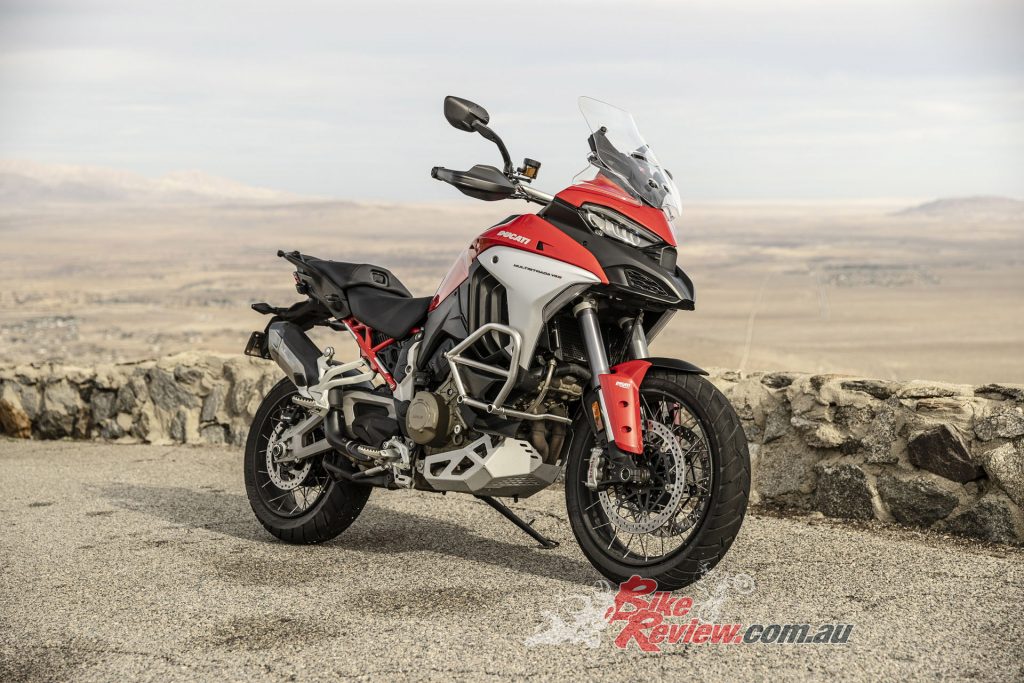
The 2021 Ducati Multistrada V4 S is a beautiful sight, the famous Ducati styling mixed with a conventional aesthetic.
The Multistrada is an interesting story in Ducati’s legacy. Its launch in 2003 elicited confusion among the Ducatisti, with a gangly appearance that looked odd in Ducati’s sportsbike lineup. The V-twin Multistrada 1000 was supplanted by an 1100 version, then replaced entirely in 2010 with the liquid-cooled Multistrada 1200. Enduro, 1260 and 950 versions followed, eventually accounting for more than 110,000 Multistrada’s sold globally by 2021.
This latest Multistrada utilises a V4 powerplant rather than the V-twins of every previous Multi. The “Granturismo” engine architecture is based on the Panigale V4’s but with an abundance of tweaks to transform it into a powerplant optimised for sport-touring work and even off-roading. As in the Panigale, the Multi uses a monocoque-style aluminium frame rather than Ducati’s trellis framework.
You can read the full Ducati list of specifications here…

Tackling the corners quickly on the factory fitted tyres was easy despite a massive 19-inch front wheel.
This is a new era for Ducati, which proudly boasts that the new V4 engine doesn’t require valve adjustments until 60,000km. When’s the last time that a Ducati has longer valve-adjustment intervals than any bike in its class? It’s likely that the original owner of a Multistrada V4 won’t ever have to even adjust the valves.
The reason behind why the Multistrada’s valve-adjustment intervals are now so long is the abandonment of Ducati’s purely mechanical Desmodromic valve-closure system in favour of coil springs to close the engine’s intake and exhaust valves. It’s the first Ducati since the 1980s not to use the Desmo valve-closure system.
Ducati has nudged the bar higher in terms of motorcycle technology with the Multistrada V4. Naturally, it has a six-axis inertial measurement unit (IMU) that informs systems such as cornering-ABS, traction control and a quickshifter. Combined with hill-hold control, cornering headlights, self-canceling blinkers, and the Skyhook semi-active suspension with a new auto-leveling function.
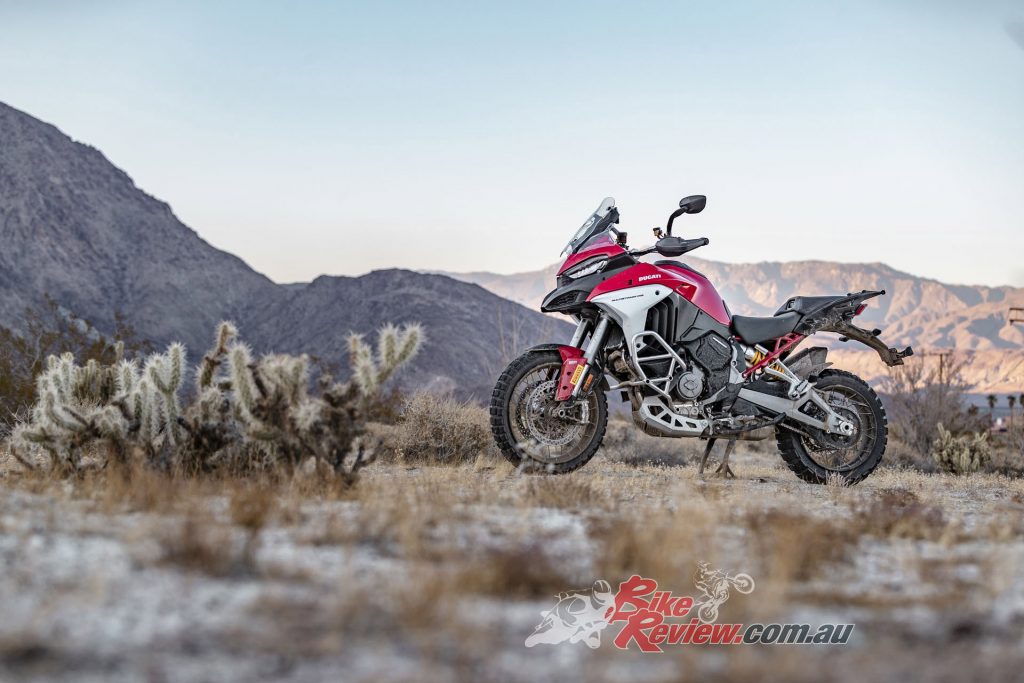
The Multistrada has a six-axis inertial measurement unit (IMU) that informs systems such as cornering-ABS, traction control and more. It also has a self levelling system.
These are all standard-equipment items on the Multistrada V4 S, not to be confused with the base V4 model, which lacks some of these features, using a smaller TFT instrument panel and set of brakes. The Ride Away price of the standard V4 starts at $28,890. Also available is a V4 S Sport model ($36,790) equipped with an Akrapovic slip-on exhaust and a carbon-fibre front guard.
The S model ($33,490) we tested has a beautiful 16.5cm colour TFT screen, large and vivid enough to take in the multitude of information available in the display, thanks to smartphone-like mineral glass that shuns reflection. For as many systems as the customisable and angle-adjustable screen monitors, it’s surprisingly easy to navigate via new joystick switchgear, conveniently backlit.
Navigating the multitude of apps is less intuitive, as you’ll need to sort through the Ducati Connect app that “mirrors” your phone, the Sygic navigation app, Ducati Link, and the MyDucati app. A rubberised and waterproof smartphone compartment with USB charger resides behind the fuel filler cap.
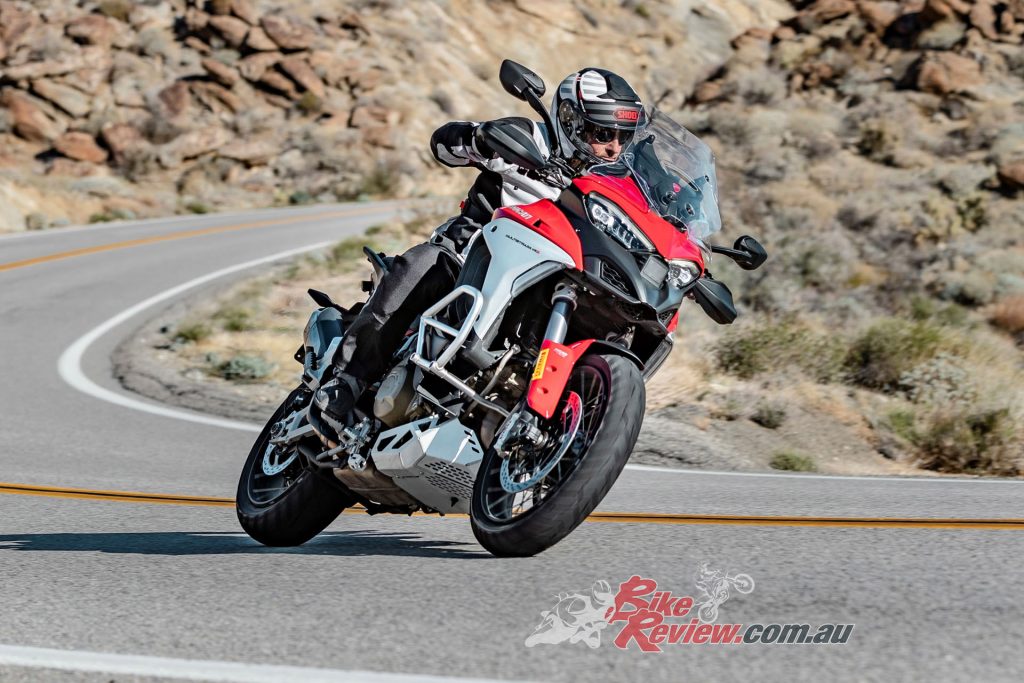
“The 19-inch wheel saps some of the sharpness a rider gets from a 17-inch wheel, but the V4’s wide handlebar overcomes a lazier feeling with mechanical leverage.”
Our ride began by pointing up one of my favourite sections of road anywhere, the lightly trafficked and twisty Montezuma Grade climbing out of Borrego Springs, California. The asphalt twists entertainingly as it climbs the rocky hills, demanding both agility and stability from a motorcycle.
First impressions were of the effects of the Multistrada’s 19-inch front wheel, a size previously seen on a Multi only in its Enduro sub-variants. The 19-inch wheel saps some of the sharpness a rider gets from a 17-inch wheel, but the V4’s wide handlebar overcomes a lazier feeling with mechanical leverage and cranks the Ducati over in a hurry when appropriately prodded, aided somewhat by the motor’s counter-rotating crankshaft as in the Panigale and Ducati MotoGP bike.
“Throttle response felt indirect, like a captain’s shout down to the engine room rather than direct communication”
On this type of road that encourages sporty riding, I became frustrated by the Touring ride mode set on my bike. Throttle response felt indirect, like a captain’s shout down to the engine room rather than direct communication. No matter, as a button push later I was enjoying the more direct responses of Sport mode and had no further complaints.
The Multistrada’s V4 engine is remarkably usable in its power delivery. Ducati’s Twin Pulse firing arrangement, like in the Panigale and MotoGP bikes, emits an exhaust note with hints of V-twin along with a creamy V4 growl. Here we have a midrange without a lull, with an authoritative lunge once past 7000rpm. Peak torque of 125Nm arrives at 8,750rpm, while power crests at 10,500rpm with 125kW.
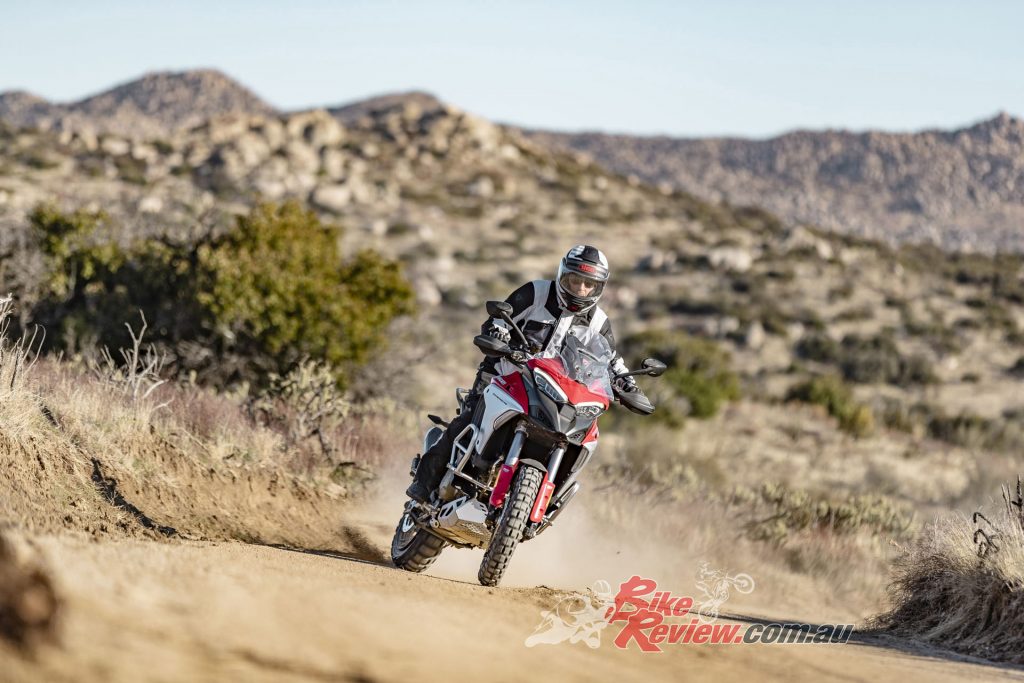
The Ducatis engine echos that of their top of the line Panigale V4 with a few changes for added comfort.
After experiencing the Multistrada at lower speeds and much higher velocities on roads both twisty and straight, I was loafing along on a straight stretch and was overcome with comfort unexpected from a Ducati. Air flowed smoothly over the hand-adjustable windscreen, and the supportive seat felt like its comfort would last for several hours. Distance from seat to pegs is an additional 2cm over the roomy 1260 Multi. Heated grips and seats are standard equipment on the V4 S, as are hardshell saddlebags that weren’t fitted to the test bikes.
Motorcycling’s first use of radar capabilities is part of the V4 S package. The Bosch system employs front and rear radar as used on Audi A3 cars, and it enables adaptive cruise control and blind-spot monitoring. Most useful is the BSM, which alerts a rider via lights in the mirrors whenever a vehicle is within harmful range, and it will flash rapidly if attempting to steer into a nearby vehicle.
Adaptive cruise control is fascinating to use. A rider selects from four following distances, which will automatically decelerate the Multistrada if the cruise speed selected is greater than the vehicle in front. It will also apply the brakes if necessary.
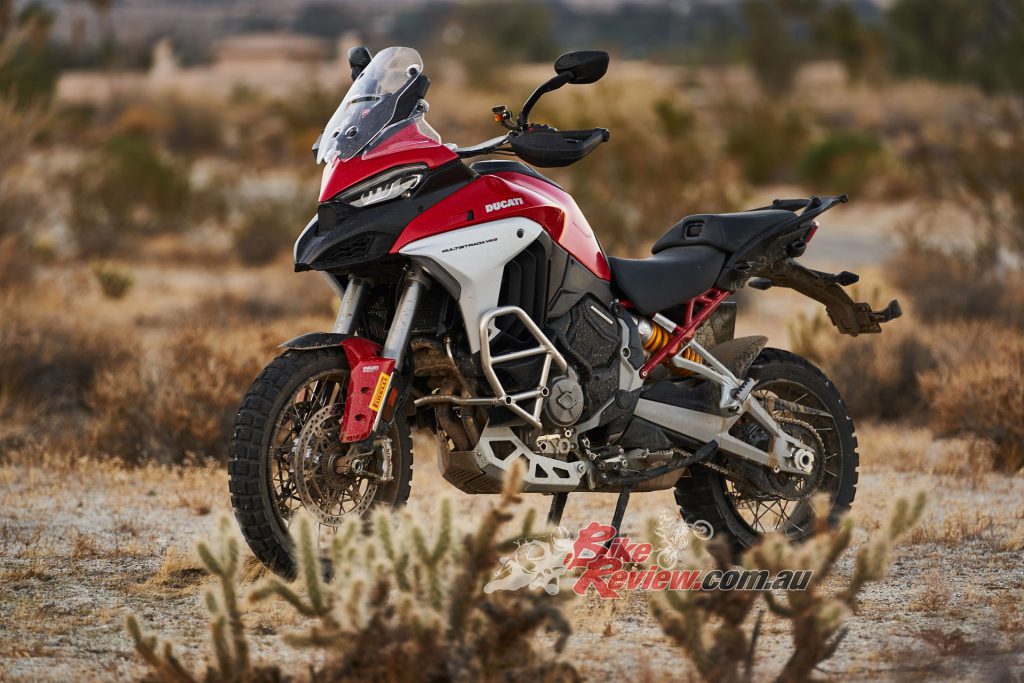
The V4 S is the first bike every to use a radar system for their cruise control. Making for a safer touring experience.
Assisted overtaking is where things get really futuristic. Let’s say the car in front is going 70km/h but the cruise control is set to 80km/h and has slowed you to the car’s speed. When it’s safe to pass and you signal and turn into the passing lane to indicate an overtake, the system automatically brings up your speed without having to actually touch the throttle.
Few owners of expensive Italian bikes will tackle technical off-road trails, but it was a necessary test. Preparations included fitting Pirelli Scorpion Rally tyres to tubeless wire-spoke wheels available as a factory option. I used the Multi’s nifty seat-height adjuster to place the saddle in its low position so my legs could best reach the ground to hold up the heavy steed. A couple of button pushes and I was in Enduro mode and had set the suspension damping to a high level.
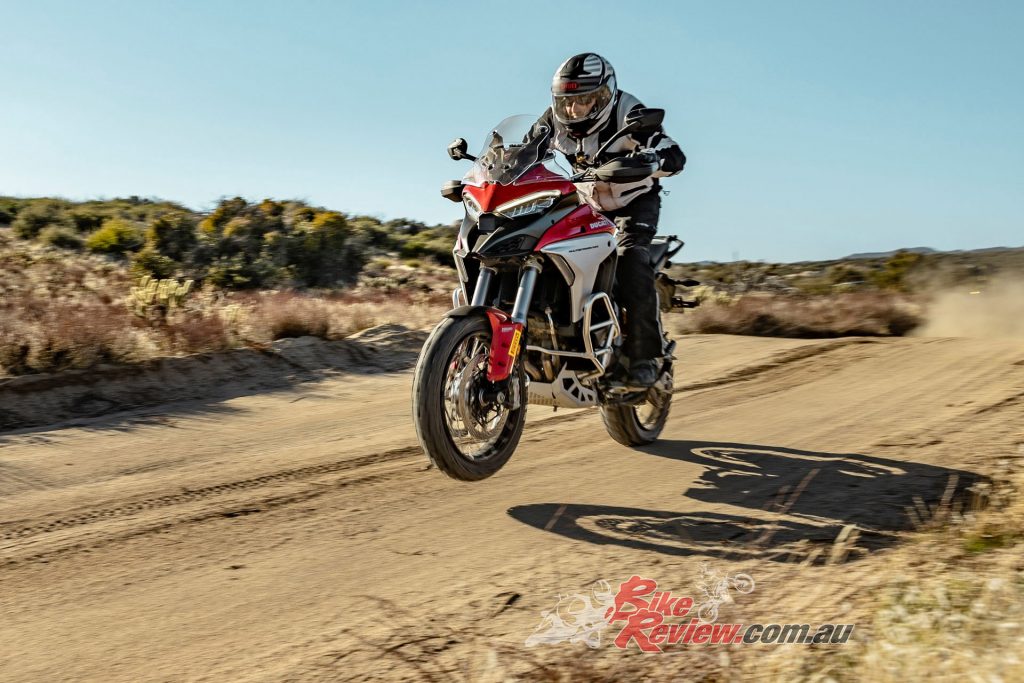
To manage the potential perils of off-road riding, Ducati fitted optional steel engine guards, skidplate, and a mesh cover for the oil cooler.
Surprisingly, the traction-control setting in Enduro mode was overly aggressive in loose dirt, so I opted to switch off TC entirely while off-road. Blessedly, Ducati allows settings for TC, wheelie control, etc., to remain stored even after keying off the ignition, preserving your chosen selections. Bikes from some other manufacturers frustratingly revert back to factory settings.
“Surprisingly, the traction-control setting in Enduro mode was overly aggressive in loose dirt, so I opted to switch off TC entirely while off-road”
While the Mutlistrada V4 won’t be able outrun a KTM 1290 Super Adventure R in the dirt, the imposing Ducati performs markedly better off-road than its appearance might lead you to believe, especially with the knobby tyres fitted to our test bike. Ergonomic updates make it easier to move around on the bike, whether standing or shifting your weight further back, while 170mm and 180mm of front/rear suspension travel absorbs reasonably big hits.

A short Enduro windscreen allowed a greater breadth of air to cool riders, while optional wire-spoke wheels and Scorpion Rally tyres supply off-road capabilities. The bike can take decent hits off road…
The V4 Multi is exemplary at gaining and losing speed, even off-road. The motor is remarkably tractable, pulling surely at just 20km/h in second gear to claw its way out of slippery situations. The quickshifter makes swapping gears simple and works flawlessly. Brembo Stylema brake calipers are astoundingly good, whether shedding triple-digit speeds or just a couple of km/h in the sand whoops.
Ducati also deserves praise for its ability to manage engine heat. An array of aerodynamic slots and gills disperse hot air, and a cylinder-deactivation system avoids adding heat when the bike is stationary by shutting down the rear cylinder at idle.
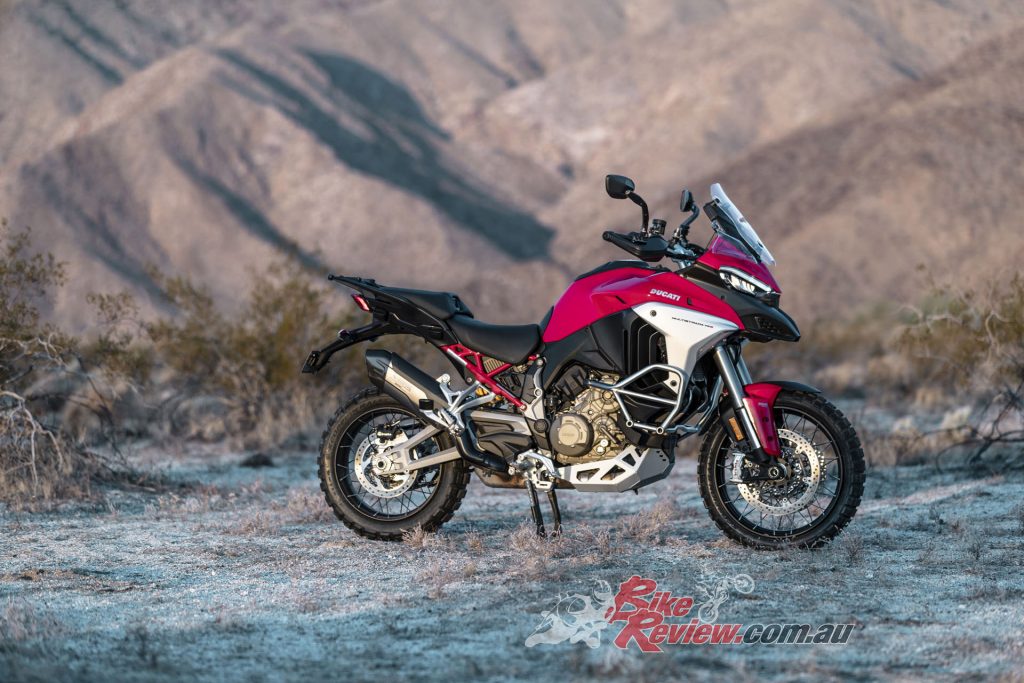
“The Multistrada V4 is a supreme road burner, as you might expect, and, in S trim, it’s endowed with more features than almost any motorcycle you could name.”
In conclusion, the Multistrada V4 is a supreme road burner, as you might expect, and, in S trim, it’s endowed with more features than almost any motorcycle you could name. It can rip up a canyon road, plough over off-road terrain, and cruise effortlessly down highways in comfort. Frugal riders will scoff at an ADV bike that costs over $30,000, but deep-pocketed enthusiasts will think the Multistrada V4 is worth every dollar for the joy of riding such a versatile, capable and charismatic Italian machine.
2021 Ducati Multistrada V4 S Specifications
Ducati.com.au
Price: From $33,490 R/A
Warranty: Two-year, unlimited kilometre
Colours: Ducati Red
Claimed power: 125kW[170hp]@10,500rpm
Claimed torque: 125Nm[92ft-lbs]@8,750rpm
Weight: 217kg Dry
Fuel capacity: 22L
Engine: V4 Granturismo, V4 90°, four-valves per cylinder, counter-rotating crankshaft, liquid-cooled, 1158cc, 83 x 53.5mm bore x stroke, 14.0:1 comp, EFI with 46mm elliptical throttle-bodies and RbW system, six-speed gearbox, wet multiplate clutch, stainless-steel exhaust, chain drive.
Chassis: Aluminium monocoque
Rake: 24.5º Trail: 102.5mm
Suspension: 50mm fully adjustable usd fork, electronic compression and rebound damping with Skyhook suspension (f), Fully adjustable monoshock, electronic adjustment, Skyhook suspension (r).
Brakes: ABS, Front: Brembo Stylema radial mount monoblock calipers, 330mm rotors, ABS, Rear: Two-piston floating caliper, 265mm rotor, ABS.
Wheels & Tyres: Spoked tubeless 3.00 x 19in (f) and 4.50 x 17in (r), Pirelli Scorpion Trail II 120/70 – 19, 170/60 – 17.
Dimensions:
Seat height: 840mm – 860mm
Wheelbase: 1567mm
Overall height: N/A
Overall width: N/A
Overall length: N/A
Dash & Electronics: Riding Modes, Power Modes, ABS Cornering, Ducati Traction Control, Ducati Wheelie Control, Daytime Running Light, Ducati Brake Light, controlled through a 7.5in TFT.
2021 Ducati Multistrada V4 S Gallery
The Verdict | Review: 2021 Ducati Multistrada V4 S


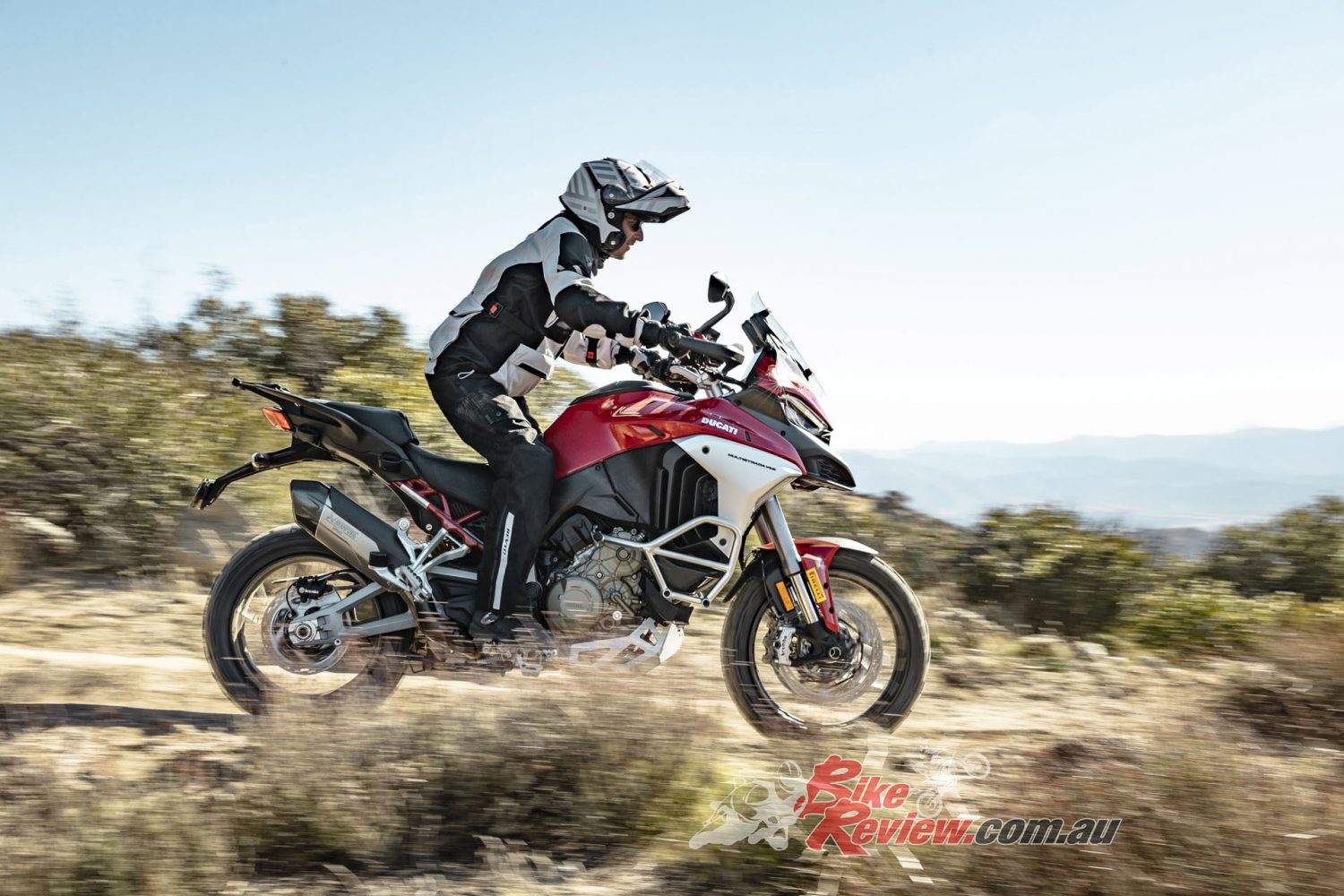
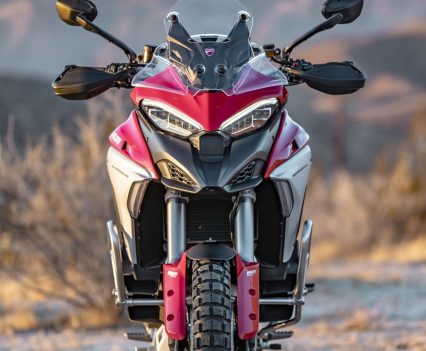
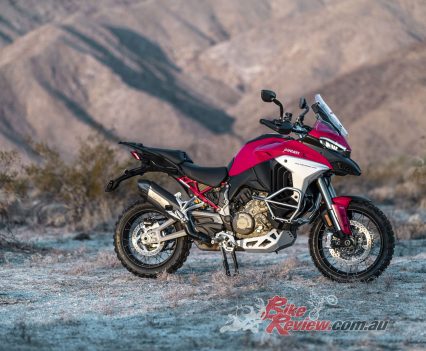
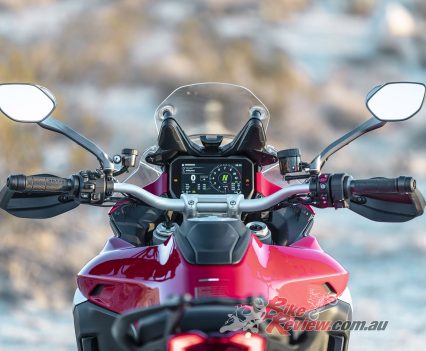
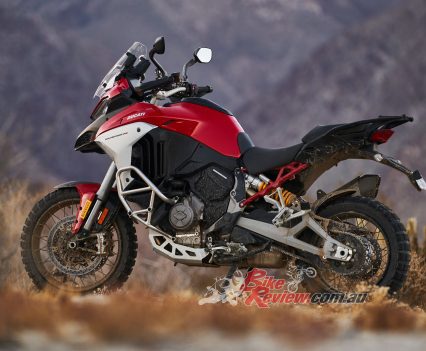
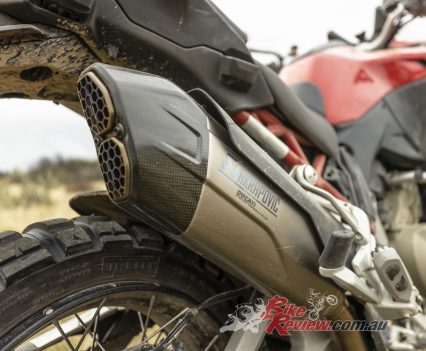
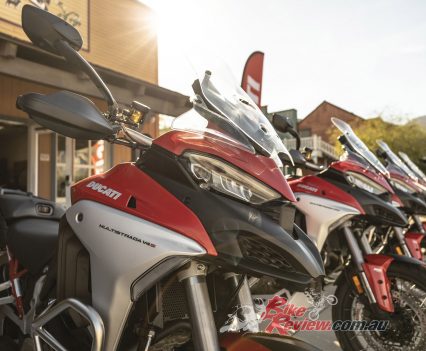

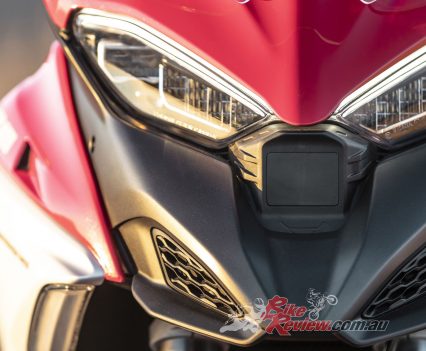
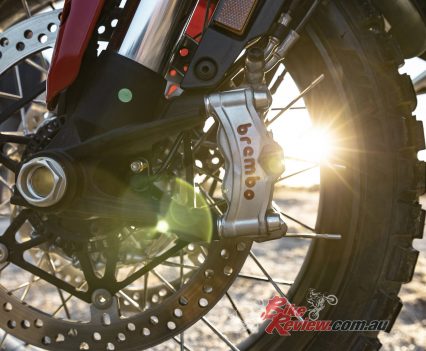

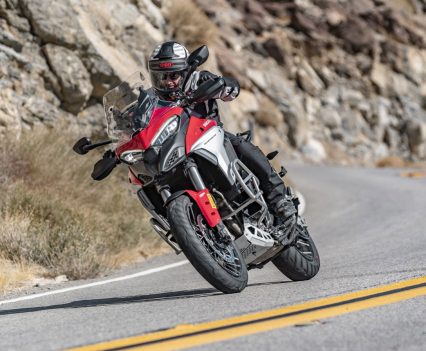
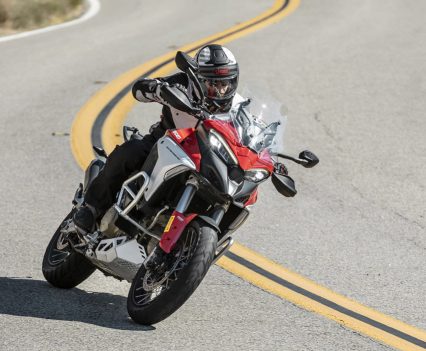
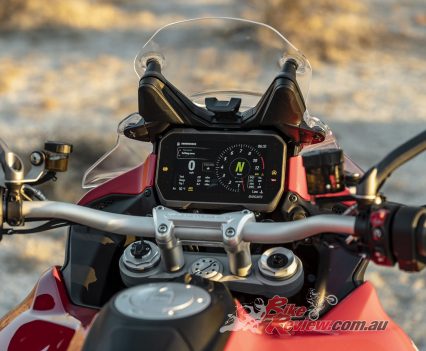
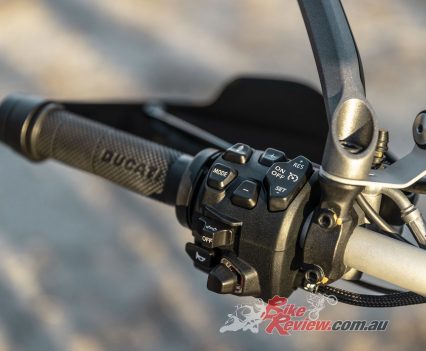
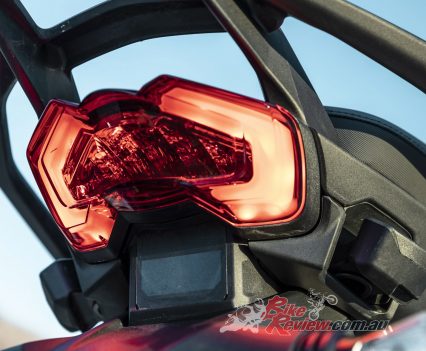

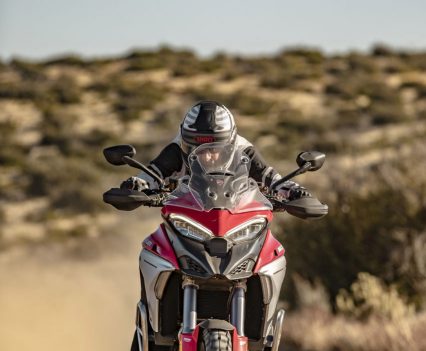
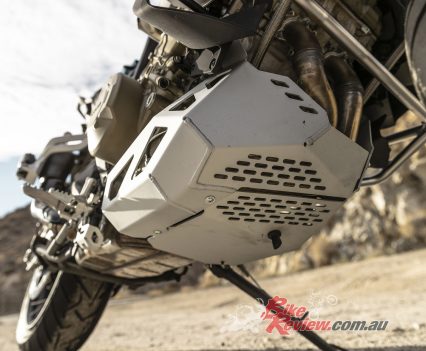


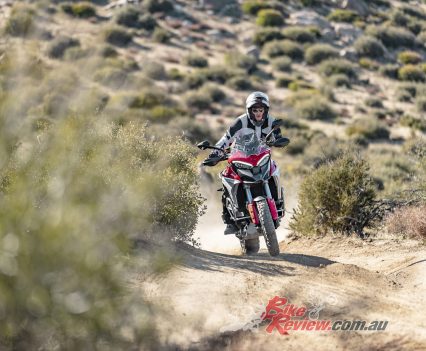
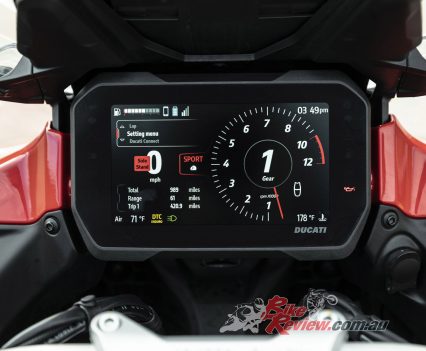
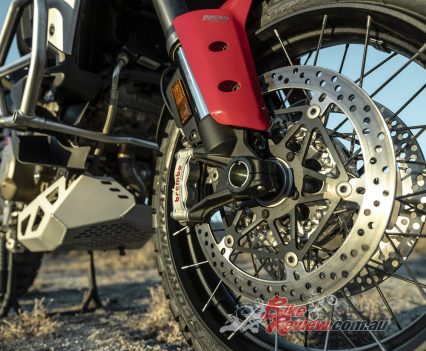


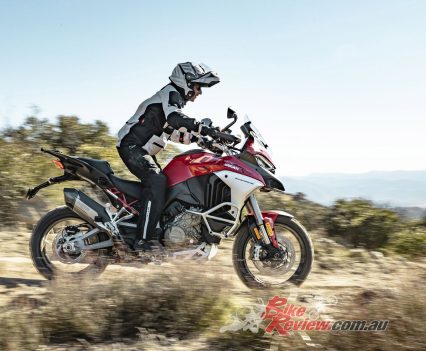
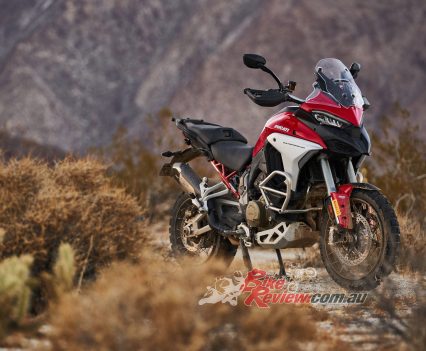
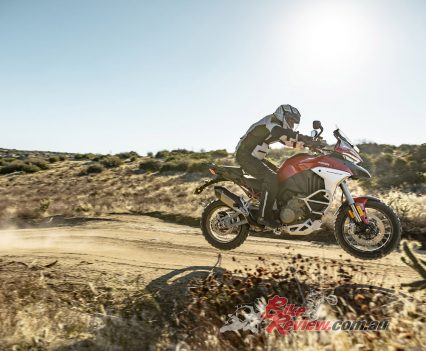
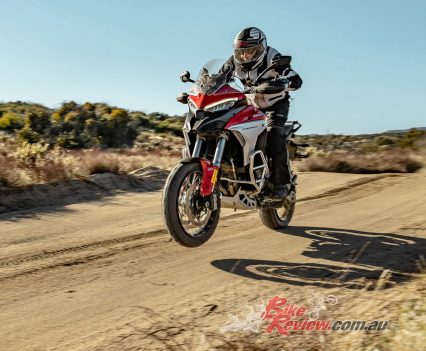
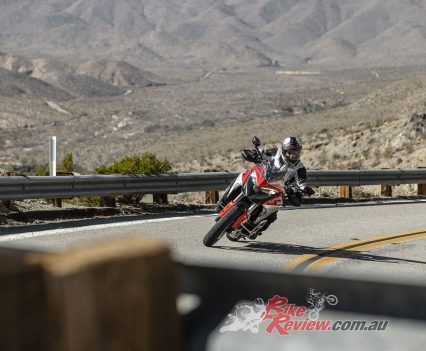
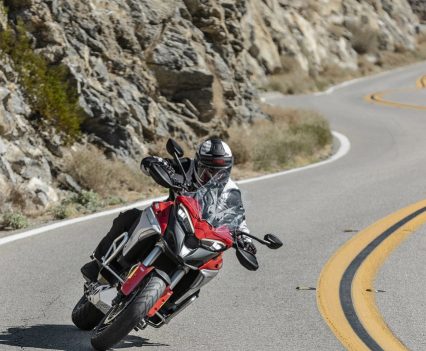
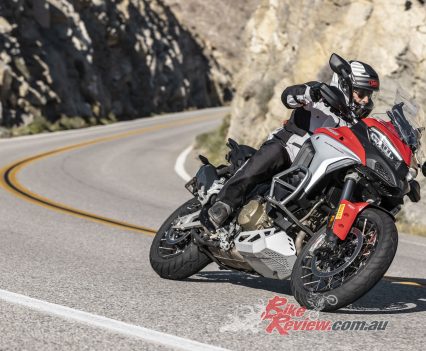
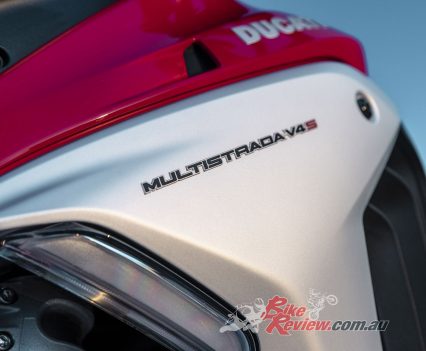
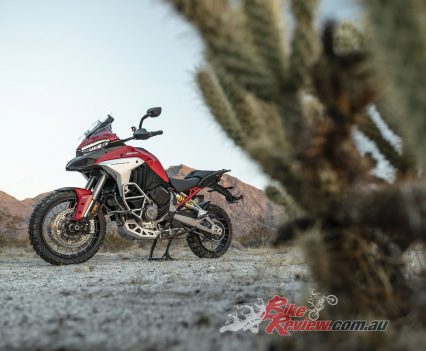
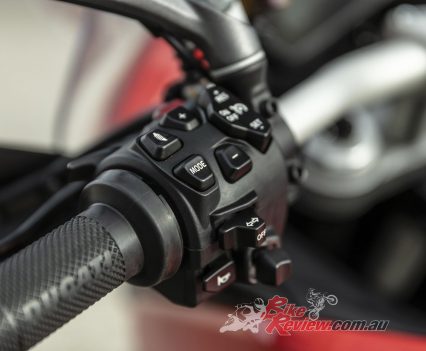
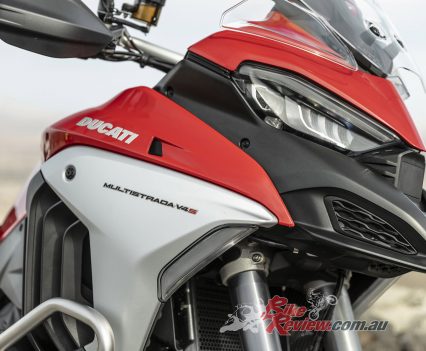
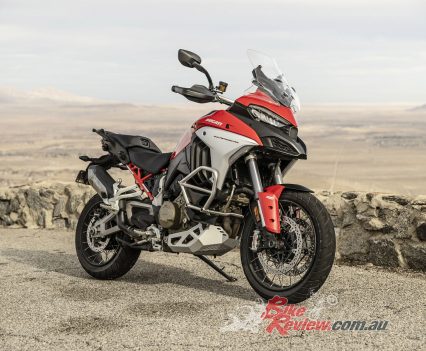
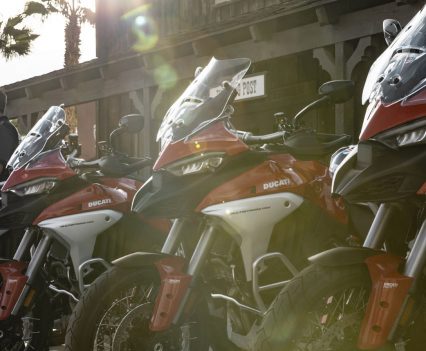
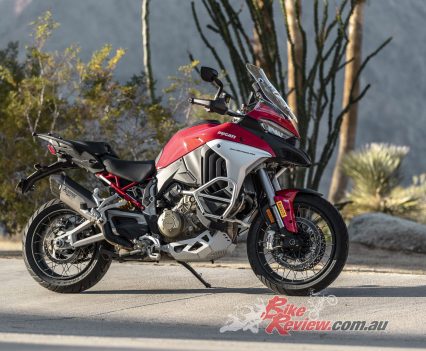

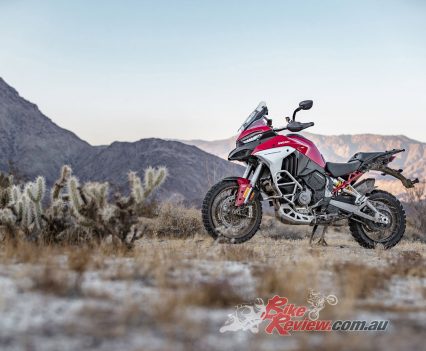
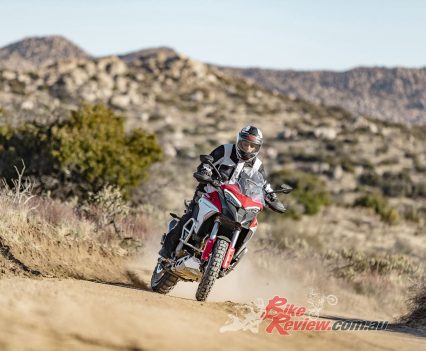
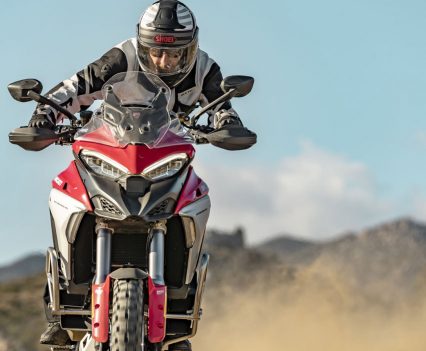
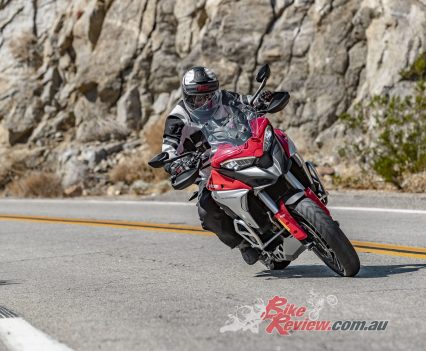
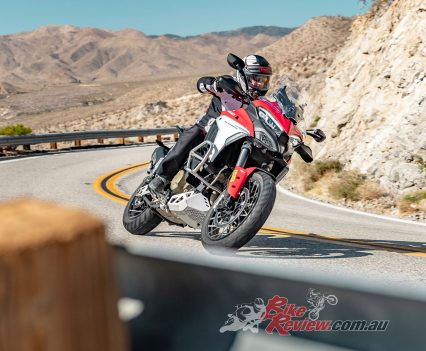
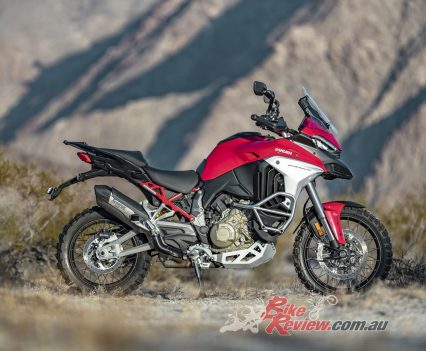
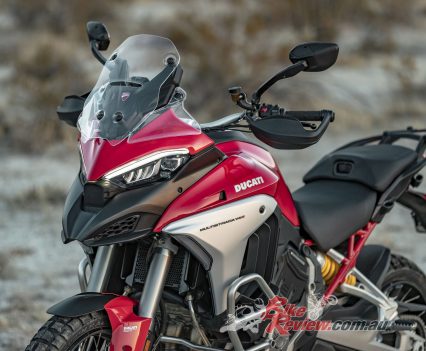
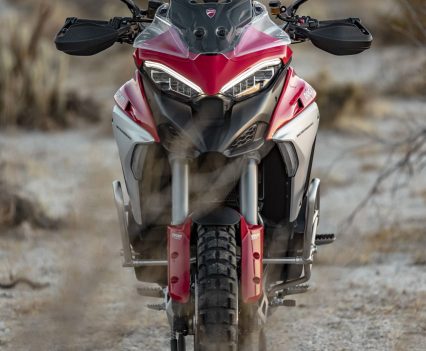
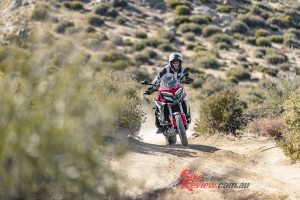
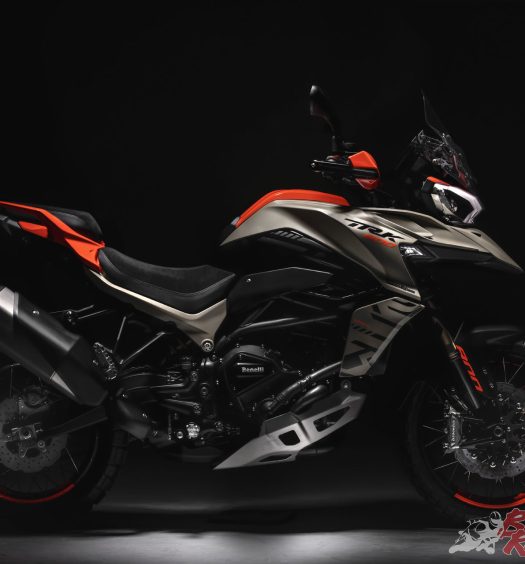
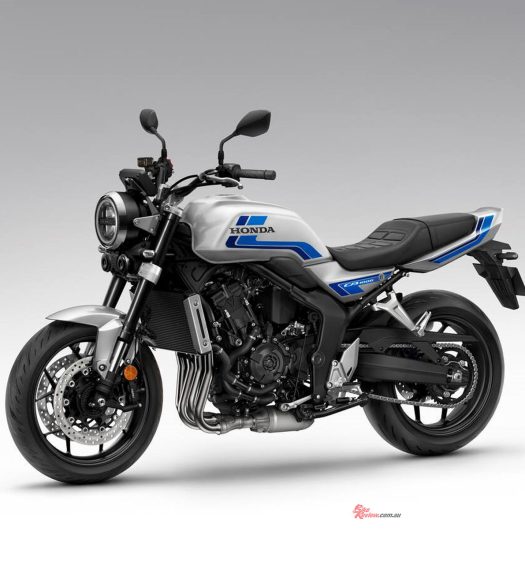













July 28, 2021
Quite the contrary with what most of the people think , I’ve purchased over 96 bikes so far and most of em tested on every track In my country. I guess they lack of experience in the field. I’ve purchased both before and theneq 1000xr
BMW is way way better than the v4 . More power agility performance overall and as to equipment no discussion there. BMW ‘s Standard version comes almost with everything instead of the really poor v4’standart version (not the 4s) . Not even a double stand included not to mention that you have to buy everything else. At the same price I get absolutely everything including gifts and goodies says exhaust pipes alarm system GPS etc.. I was expecting so much from a v4 and got really disappointed!
Personally I think it’s a waste of money I wish I would’ve gone only for the xr1000